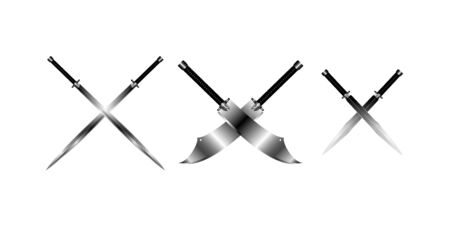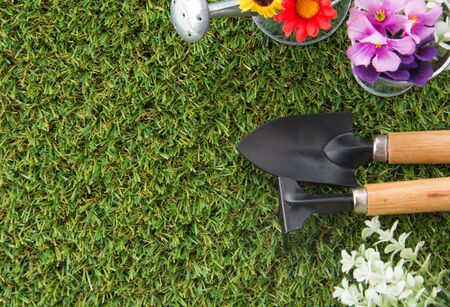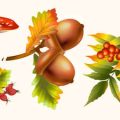1. Understanding Your USDA Hardiness Zone
Before you start preparing your garden for winter, it’s essential to know your USDA Plant Hardiness Zone. This system divides the United States into zones based on average annual minimum winter temperatures. Knowing your zone helps you choose the right plants and plan the best winterizing strategies tailored to your region.
Why Your Hardiness Zone Matters
Your hardiness zone determines how cold your winters typically get, which affects what plants can survive outdoors and which ones need extra protection or to be brought inside. For example, a plant that thrives in Zone 9 may not survive the freezing temperatures of Zone 5 without proper care.
How to Find Your USDA Hardiness Zone
You can find your zone by entering your ZIP code on the USDA Plant Hardiness Zone Map. Once you know your zone, you’ll better understand when to start winterizing tasks and which tools and materials are most effective for your area.
USDA Zones and Their Characteristics
| Zone | Average Minimum Temperature (°F) | Winterizing Considerations |
|---|---|---|
| Zone 3 | -40 to -30°F | Heavy mulching, frost cloths, bring potted plants indoors |
| Zone 5 | -20 to -10°F | Protect perennials, use cold frames for vegetables |
| Zone 7 | 0 to 10°F | Mulch lightly, protect sensitive shrubs with burlap |
| Zone 9 | 20 to 30°F | Mainly focus on drainage and occasional frost protection |
| Zone 11+ | Above 40°F | Mild winters—minimal prep needed beyond pruning and pest control |
Planning Based on Your Zone
If youre in a colder zone like Zone 4 or below, start winterizing earlier in the fall before hard frosts arrive. In warmer zones like Zone 9 or higher, your main concerns might be protecting tropical plants from unexpected cold snaps or managing excess rain. Matching your strategy to your zone ensures your garden survives winter and thrives come spring.
Quick Tips:
- Check local forecasts: Microclimates can affect how soon you need to act.
- Group potted plants: Place them together near walls for warmth in colder zones.
- Use mulch appropriately: It insulates roots but should be applied after the first frost to avoid attracting pests.
Next Steps:
Now that you know how important your USDA zone is, youre ready to gather the right tools and materials for winterizing based on your region’s specific needs.
2. Essential Tools and Materials for Winter Prep
Getting your garden ready for winter requires more than just good intentions—it takes the right tools and materials to protect your plants from freezing temperatures, harsh winds, and heavy snowfall. Below is a helpful guide to the must-have items every gardener should have on hand before the first frost hits.
Key Tools and Supplies Checklist
| Item | Purpose | Tips for Use |
|---|---|---|
| Mulch | Insulates soil and roots | Use organic mulch like straw, shredded leaves, or wood chips around perennials and shrubs |
| Burlap | Protects delicate plants from windburn and frost | Wrap around small trees or shrubs; secure with twine or landscape staples |
| Pruning Shears | Trims dead or diseased branches before dormancy | Sanitize blades between cuts to prevent spreading disease |
| Frost Blankets (or Garden Fabric) | Covers plants during frosty nights | Drape loosely over plants and secure at ground level to trap warmth |
| Garden Gloves | Keeps hands warm and protected while working outdoors | Choose insulated gloves with good grip for winter tasks |
| Compost Bin or Bags | Collect fallen leaves and garden debris for composting | Avoid composting diseased plant material; keep pile turned regularly if active through winter |
| Watering Can or Hose with Shut-off Valve | Keeps soil hydrated before the ground freezes | Water deeply in late fall, especially for newly planted trees and shrubs |
Why These Tools Matter
The right materials make all the difference in how well your garden weathers the winter months. Mulch helps stabilize soil temperatures and reduces freeze-thaw cycles that can damage roots. Burlap shields sensitive evergreens from drying winter winds, while frost blankets can save late-season veggies or delicate ornamentals from sudden cold snaps.
Bonus Tip:
If you live in a region with heavy snow, consider staking taller plants or installing snow fencing to prevent breakage under snow load. Also, dont forget to drain and store garden hoses to avoid freeze damage.
Keep It Simple and Stocked Up
You don’t need fancy equipment—just a few reliable basics. By gathering these essential tools early in the season, you’ll be ready to act when the temperature starts to drop.

3. Protecting Perennials, Trees, and Shrubs
As temperatures drop, it’s crucial to give your perennials, trees, and shrubs the care they need to survive winter and thrive come spring. These landscape staples are often long-term investments in your yard, so a little preparation goes a long way. Here’s how to insulate roots, prune properly, and shield plants from harsh weather.
Insulating Roots: Mulching Matters
One of the best ways to protect plant roots is by applying mulch before the ground freezes. Mulch acts as an insulating blanket that regulates soil temperature and retains moisture. Use organic materials like shredded bark, pine needles, or straw. Apply 2–4 inches around the base of plants, being careful not to pile it directly against stems or trunks.
Best Mulch Types for Winter Protection
| Mulch Type | Benefits |
|---|---|
| Shredded Bark | Long-lasting, great insulation |
| Pine Needles | Lightweight, allows good airflow |
| Straw | Excellent for vegetable beds and tender perennials |
Pruning: Timing Is Everything
Proper pruning helps prevent breakage from snow and ice while encouraging healthy growth in spring. However, timing is key. Prune dead or damaged branches anytime, but avoid heavy pruning in late fall as it can stimulate new growth that may not harden off before frost.
When to Prune Common Plants
| Plant Type | Best Time to Prune |
|---|---|
| Deciduous Trees (e.g., maple, oak) | Late winter when dormant |
| Shrubs (e.g., hydrangeas, roses) | After leaves drop but before new growth starts |
| Perennials (e.g., hostas, coneflowers) | Cut back after first hard frost or leave for winter interest/wildlife habitat |
Covering Plants: Shield from Snow and Wind
Certain plants benefit from physical protection during extreme cold or high winds. Burlap wraps work well for evergreen shrubs and young trees. You can also use plant covers or even upside-down flower pots for smaller perennials during unexpected cold snaps.
Quick Tips for Covering Plants:
- Burlap: Wrap loosely around shrubs and secure with twine.
- Cloches: Use plastic or glass cloches for individual perennials.
- Frames with Fabric: Build simple wooden frames covered with frost cloth for larger beds.
A little effort now can save you time and heartache later. By mulching wisely, pruning at the right time, and using protective covers, your garden will be ready to face whatever winter throws its way.
4. Vegetable Garden and Soil Care
As winter approaches, its important to give your vegetable garden the attention it needs to rest and recharge for the next growing season. Taking care of your soil now ensures a healthier, more productive garden come spring. Heres how you can prepare your vegetable garden and nurture your soil during the colder months.
Harvest Remaining Crops
Before the first hard frost hits, check your garden for any remaining vegetables. Root crops like carrots, beets, and parsnips can often tolerate light frosts and may even taste sweeter afterward. However, tender plants such as tomatoes, peppers, and squash should be harvested before temperatures drop below freezing.
Tips for Final Harvest:
- Pick all ripe or nearly ripe fruits from tomato and pepper plants.
- Pull up any remaining beans or cucumbers before frost damages them.
- Leave hardy greens like kale or spinach in place if mild weather continues.
Amend Your Soil for Spring Planting
Fall is a great time to improve your soil structure and fertility. After removing spent plants and weeds, consider adding organic matter to enrich the soil over winter. This gives microorganisms time to break it down, making nutrients more available in the spring.
Common Soil Amendments:
| Amendment | Benefits |
|---|---|
| Compost | Adds nutrients and improves soil texture |
| Aged Manure | Boosts nitrogen levels (must be well-composted) |
| Leaf Mold | Improves moisture retention and soil structure |
| Lime (if needed) | Adjusts acidic soil pH levels |
Always test your soil before applying lime or other amendments to avoid over-correcting.
Plant Cover Crops or Add Compost Mulch
Certain cover crops—also called “green manure”—can protect your soil from erosion, suppress weeds, and add nutrients naturally. These crops are planted in late fall and tilled into the soil in early spring before planting vegetables.
Popular Fall Cover Crops:
| Cover Crop | Main Benefit |
|---|---|
| Clover | Adds nitrogen to the soil |
| Winter Rye | Prevents erosion and adds organic matter |
| Hairy Vetch | Fixes nitrogen and grows well in cold conditions |
If you dont want to plant cover crops, spreading a thick layer of compost or shredded leaves over your garden beds is another excellent way to insulate the soil and feed it over winter. Aim for 2–3 inches of mulch to keep soil life active while protecting against harsh weather.
5. Timing Your Winterizing Tasks
When it comes to winterizing your garden, timing is everything. The key to a successful transition into winter is understanding the weather patterns and first frost dates in your specific region. Since the United States spans several climate zones, its important to tailor your garden prep schedule based on where you live.
Understanding First Frost Dates
The first frost date is when temperatures typically drop to 32°F or lower for the first time in fall. Knowing this date helps you plan when to begin tasks like mulching, cutting back perennials, and protecting sensitive plants. Heres a general idea of first frost timelines across different U.S. regions:
| Region | Estimated First Frost Date |
|---|---|
| Northeast (e.g., New York, Boston) | Mid-October to Early November |
| Midwest (e.g., Chicago, Minneapolis) | Early October to Mid-October |
| Southeast (e.g., Atlanta, Charlotte) | Late November to Early December |
| Southwest (e.g., Phoenix, Las Vegas) | Late November to Mid-December |
| Northwest (e.g., Seattle, Portland) | Late October to Early November |
| West Coast (e.g., San Francisco, Los Angeles) | Rare frosts; monitor local conditions |
What to Do and When
Once you know your regions average first frost date, count backward 4–6 weeks to start preparing your garden. Here’s a sample timeline to guide you:
| Task | When to Do It (Before First Frost) |
|---|---|
| Clean up dead annuals and spent vegetables | 4–6 weeks before |
| Add compost and mulch beds | 3–5 weeks before |
| Cut back perennials (if needed) | 2–4 weeks before |
| Protect sensitive plants with covers or bring indoors | 1–2 weeks before |
| Drain irrigation systems and store hoses/tools | 1 week before |
Tip:
If youre unsure of your areas frost date, use online tools like the USDA Plant Hardiness Zone Map or check with your local extension office.
Stay Flexible with the Weather
The weather doesn’t always stick to a schedule, so keep an eye on forecasts as fall progresses. If an early cold snap is predicted, prioritize essential tasks like protecting tender plants and draining water lines.
6. Storing Gardening Equipment and Outdoor Decor
Winter can be tough on your gardening gear and outdoor decorations if they’re not properly stored. Taking the time to clean, store, and maintain these items now can save you money and effort come spring. Here’s how to make sure your tools and décor stay in top shape through the colder months.
Cleaning Your Garden Tools
Before storing your tools, give them a thorough cleaning to prevent rust and deterioration.
- Remove dirt: Use a stiff brush or putty knife to scrub off any soil or plant debris.
- Disinfect: Wipe blades with rubbing alcohol or a diluted bleach solution (1 part bleach to 9 parts water).
- Dry completely: Let all tools air dry fully before storing.
- Oil metal parts: Apply a light coating of vegetable oil or WD-40 to prevent rust.
How to Store Your Tools Properly
Once clean, proper storage will protect your tools from moisture and extreme temperatures.
| Tool Type | Storage Recommendation |
|---|---|
| Hand Tools (pruners, trowels) | Hang on a pegboard in a dry shed or garage |
| Larger Tools (shovels, rakes) | Store upright with heads off the ground; hang if possible |
| Power Tools (trimmers, blowers) | Drain fuel, clean thoroughly, store in original case or covered area |
| Garden Hoses | Drain water completely, coil loosely, store indoors or in a hose reel box |
Caring for Garden Hoses
If left outside with water inside, hoses can crack or burst during freezing temperatures. Always disconnect and drain hoses before the first frost. Coil them loosely to avoid kinks and store them in a basement, garage, or insulated shed.
Protecting Outdoor Décor
Your garden statues, planters, solar lights, and other decorations also need attention before winter sets in.
Steps for Winterizing Outdoor Décor:
- Clean items: Remove dirt and algae buildup with mild soap and water.
- Check for damage: Repair cracks or chips that could worsen with freeze-thaw cycles.
- Store fragile items: Bring ceramic pots, glass ornaments, or delicate pieces indoors.
- Cover sturdier items: Use weather-resistant covers for benches, fountains, and larger statues that must remain outside.
A Few Extra Tips:
- Add moisture absorbers like silica gel packs in storage boxes to reduce condensation.
- Create an inventory list of stored items so nothing gets forgotten over winter.
- If space allows, group similar items together in labeled bins for easy access next season.
Taking these simple steps now can help extend the life of your garden equipment and décor—and make your spring gardening start smoother than ever!


